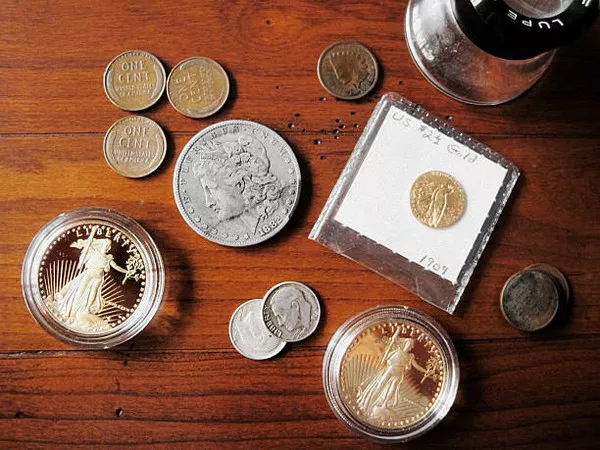Sterling silver is a popular and valuable metal used in jewelry, flatware, and decorative items. Recognizing genuine sterling silver is essential, as it ensures that you’re purchasing a quality product or accurately assessing the value of an item you already own. In this comprehensive guide, we will explore various methods to help you distinguish authentic sterling silver from imitations or lower-quality alloys. By familiarizing yourself with these techniques, you’ll be equipped with the knowledge to make informed decisions and confidently identify sterling silver.
Look for Hallmarks or Stamps:
One of the primary indicators of sterling silver is the presence of hallmarks or stamps. These marks are usually imprinted or engraved on the item and indicate its silver content. Here’s what you should know:
Sterling Silver Mark: Look for the numbers “925” or “92.5” stamped on the item. These markings indicate that the piece contains 92.5% pure silver, which is the standard composition for sterling silver. The remaining 7.5% is typically composed of other metals, such as copper, which enhance the metal’s durability.
Maker’s Mark: In addition to the sterling silver mark, many pieces also feature a maker’s mark, which is a unique symbol or initials representing the manufacturer or silversmith. Researching the maker’s mark can provide insights into the item’s origin and authenticity.
It’s important to note that not all sterling silver items may have a hallmark or stamp, especially if they are older or handmade. In such cases, additional identification methods become crucial.
Perform the Magnet Test:
Another simple yet effective test to determine if an item is made of sterling silver is the magnet test. While silver is not magnetic, many other metals are. Here’s how to conduct the test:
Use a small, strong magnet.
Place the magnet near the item and observe its behavior.
If the magnet is attracted to the item, it is not made of sterling silver. Genuine sterling silver will not be attracted to the magnet.
Keep in mind that some components of the item, such as clasps or springs, may be made of metals that are magnetic. Focus on testing the main body or surface of the item to get an accurate result.
Conduct the Ice Test:
The ice test is a simple and quick method that relies on silver’s excellent thermal conductivity. Follow these steps to perform the test:
- Place an ice cube on a clean surface, such as a glass or ceramic plate.
- Place the item you suspect to be sterling silver on top of the ice cube.
- Observe the reaction of the item to the ice.
Genuine sterling silver will quickly transfer heat from the item to the ice, causing the ice to melt rapidly. This occurs because silver has the highest thermal conductivity among common metals.
It’s important to note that this test is not foolproof and should be used in conjunction with other identification methods for accurate results.
Examine the Tarnish and Patina:
Sterling silver develops a characteristic tarnish over time due to its interaction with sulfur compounds present in the environment. Tarnish appears as a dark, dull coating on the surface of the silver. Here’s what to consider:
Authentic tarnish: Genuine sterling silver tarnishes uniformly, turning dark gray or black over time. This natural patina can be easily removed with silver polish, revealing the shining silver underneath.
Uneven or flaky tarnish: If the tarnish appears uneven, flaky, or easily rubs off, it may indicate a silver-plated or base metal item rather than genuine sterling silver.
It’s worth noting that some silver-plated items may also develop a patina that resembles tarnish. Therefore, it’s crucial to use this method in conjunction with other identification techniques to confirm the authenticity of the item.
Conduct Acid Testing:
Acid testing is a more advanced method used by professionals to determine the silver content of an item. This test involves the use of nitric acid, which reacts differently with genuine sterling silver compared to other metals. Here’s a general outline of the process:
Wear protective gloves and eyewear.
Select a discreet area of the item where the test will be conducted.
Apply a small amount of nitric acid to the area using a cotton swab or dropper.
Observe the reaction of the acid with the metal.
Genuine sterling silver: The acid will cause the tested area to turn a creamy color.
Silver-plated or base metal: The acid will cause the tested area to turn green or show no reaction.
Acid testing should be performed cautiously and is best left to experienced professionals, as it involves the use of potentially harmful chemicals.
Conclusion:
Being able to identify genuine sterling silver is essential for buyers and collectors alike. By familiarizing yourself with the hallmarks and stamps, conducting tests such as the magnet test and ice test, examining the tarnish and patina, and understanding acid testing, you’ll have a comprehensive understanding of how to differentiate authentic sterling silver from imitations or lower-quality alloys.
It’s important to note that while these identification methods can provide valuable insights, they are not foolproof. Some counterfeit items may have convincing hallmarks or pass certain tests. If you have doubts about the authenticity of an item, it’s advisable to consult with a professional jeweler or silver expert who can provide a more accurate assessment.
Remember, acquiring knowledge and practicing due diligence are key factors in successfully identifying genuine sterling silver. By honing your skills and employing multiple identification techniques, you can confidently navigate the market, make informed purchases, and accurately assess the value of your silver items.


